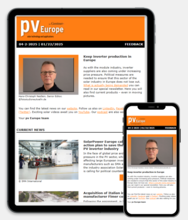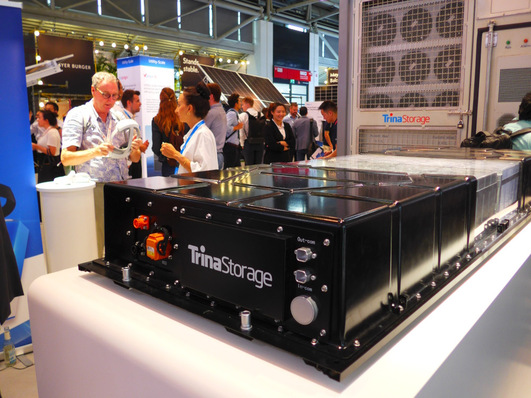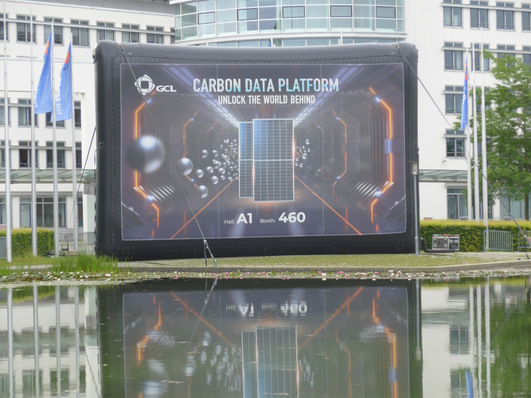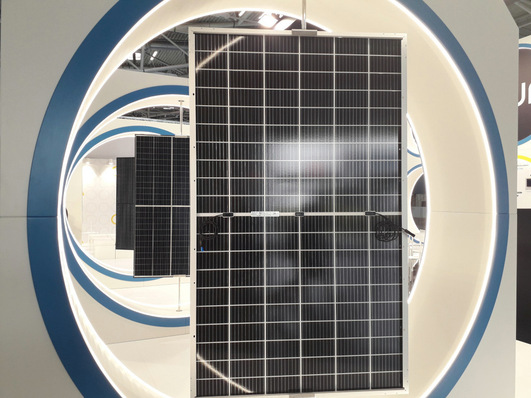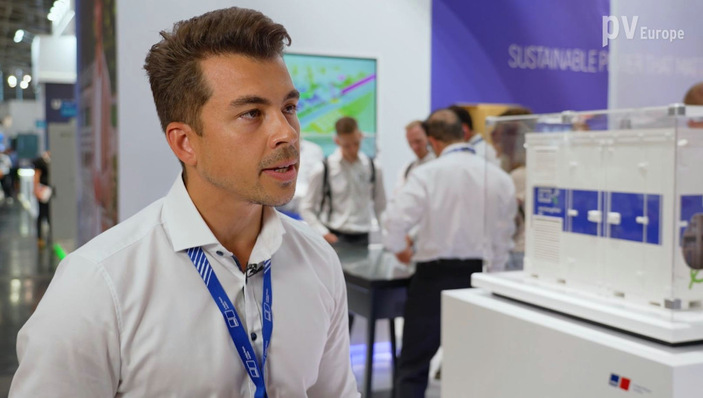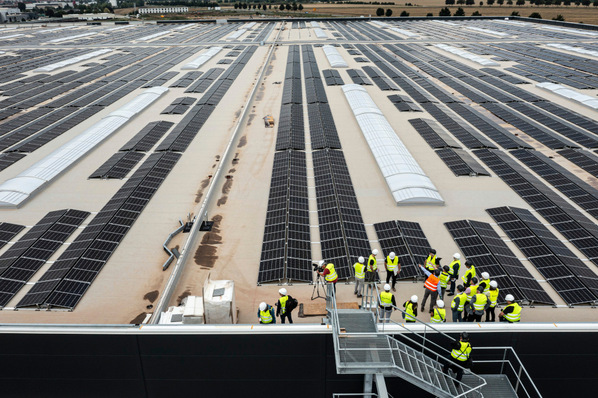TOPCon cells, short for tunnel oxide passivated contact, are currently in high demand. Developed by the Fraunhofer Institute for Solar Energy Systems (ISE) in Freiburg, these cells are available in both monofacial and bifacial designs.
More on this in the first part of this article: Trends and Technologies at The smarter E Europe
In 2024, Jinko presented a monocrystalline, bifacial TOPCon module with a module efficiency of 23.53%. Longi Solar even achieved 25.19% using a P-type TOPCon cell, which is more resistant to higher temperatures than Perc and offers higher yields in low-light conditions.
After PID and LID – now UVID?
Modules with TOPCon cells are now being installed on a massive scale worldwide. In real conditions, it has become clear that, in certain circumstances they lose power due to the influence of ultraviolet radiation in the solar spectrum. This is reminiscent of light-induced degradation (LID), which was a major issue for Perc modules in 2017 and 2018, but has essentially been resolved since 2020. To date, TOPCon modules have shown no abnormalities with regard to LID.
Expert analysis: Is the market optimism justified?
However, performance reductions seemingly linked to the UV dose on the front side have indeed been measured in modules. The proportion of UV in sunlight varies mainly with altitude or can be influenced by local conditions. This impacts the bonding of silicon with hydrogen, which reduces the performance of modules.
Checkerboard pattern
It is also known that UVID does not affect all TOPCon modules equally. Depending on the film or front glass, this effect may be more or less pronounced. The quality of the passivation layer made of silicon nitride and aluminium oxide is critical. The more homogeneous it is, the lower the influence of UV light. In darkness (at night) or bad weather, performance reduction can partially reverse to normal levels.
Winaico presents Topcon solar module with 515 watts
In modules damaged by UVID in the electroluminescence, it is possible to identify the typical checkerboard pattern of affected cells. Some manufacturers our tackling the issue with special UV blockers in the encapsulation foils. The phenomenon of UVID that can be particularly influential on the front of modules, while the rear sides of bifacial modules are far less at risk
Evolving performance
As the industry pushes for higher efficiencies, the performance of solar modules continues to evolve. With advancements such as TOPCon technology leading the charge, the potential for increased energy generation is becoming more apparent. However, challenges including UVID continue to present hurdles. Looking ahead, the demand for more sustainable, efficient and cost-effective solutions is only growing, and the next steps in solar cell technology are set to push the boundaries even further
You can read more in the following article xxx
Stay up-to-date and register for the pv Europe newsletter.


